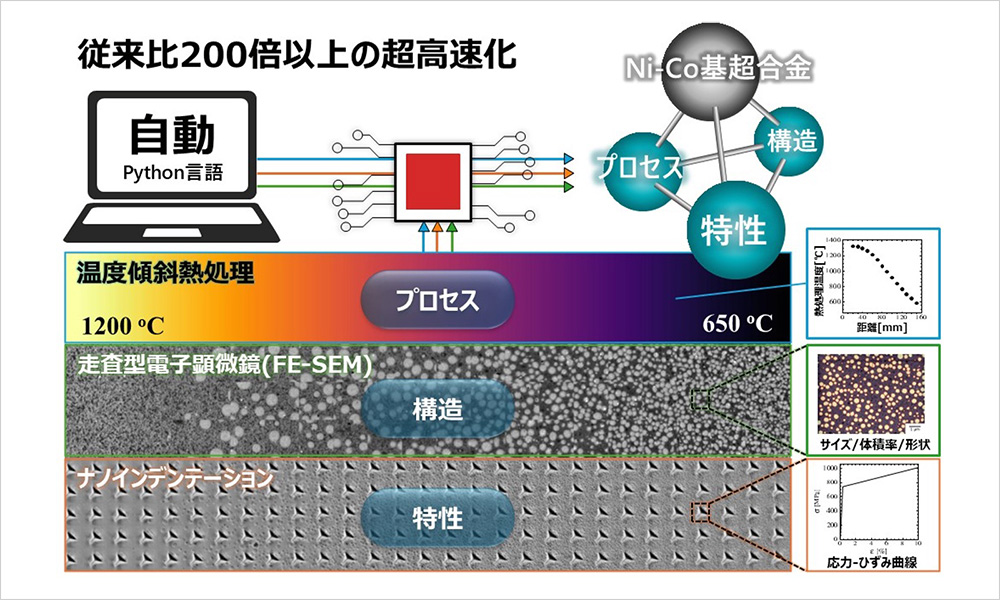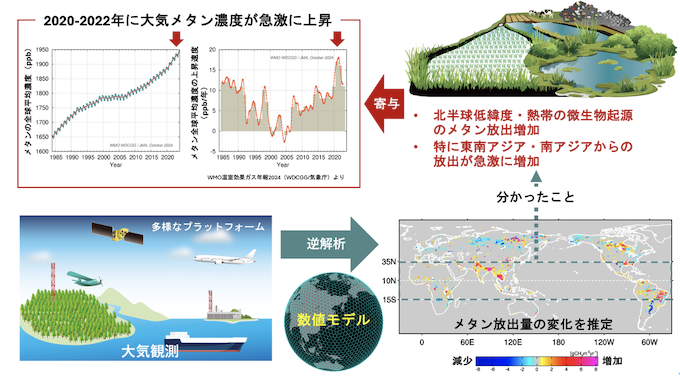2025-07-07 物質・材料研究機構

図: 構造材料データベースの自動×超高速生成システムの概略
<関連情報>
- https://www.nims.go.jp/press/2025/07/202507070.html
- https://www.nims.go.jp/press/2025/07/olp8uc000000cmhm-att/202507070.pdf
- https://www.sciencedirect.com/science/article/pii/S0264127525006999
構造材料のハイスループットなプロセス-構造-物性データセット生成のための自動化システム: γ/γ′超合金のケーススタディ Automated system for high-throughput process-structure-property dataset generation of structural materials: A γ/γ′ superalloy case study
Thomas Hoefler, Ayako Ikeda, Toshio Osada, Toru Hara, Kyoko Kawagishi, Takahito Ohmura
Materials & Design Available online: 20 June 2025
DOI:https://doi.org/10.1016/j.matdes.2025.114279
Highlights
- 2400 points on a gradient sample give a Process-Structure-Property dataset in days.
- Aging process kinetics of a γ/γ′ superalloy are examined at 220 temperatures.
- The geometry of nearly a million γ′ precipitates is evaluated by image analysis.
- Stress/strain curves are gathered from nanoindentation and SEM topographic scanning.
Abstract
We present an automated high-throughput method capable of gathering 2400 data points relating processing conditions, microstructure geometry and yield strength in just 13 days. An estimated 200 times faster than conventional methods using tensile testing specimens, a complete Process-Structure-Property (P-S-P) dataset is created from a single sample. The method is demonstrated by example of the aging heat treatment process of a γ/γ′ superalloy. By aging the sample in a temperature gradient, a wide range of aging process temperatures is mapped over the sample length. Structure analysis consists of fully automated, nanometer-resolution FE-SEM scanning, with precipitate fraction, size and shape distributions determined by automatic image analysis using the Python programming language. Mechanical properties are evaluated by nanoindentation inverse analysis, an approach combining instrumented indentation data with pile-up analysis to calculate stress/strain curves. While the necessary topographic data is typically acquired using atomic force microscopy, a significant speedup was achieved by automatic indent detection and scanning using Angular selective Backscatter FE-SEM analysis. As a method to rapidly assemble comprehensive and consistent P-S-P datasets, we expect it to facilitate efficient alloy design, given a vast majority of modeling approaches still heavily rely on empirical data.



